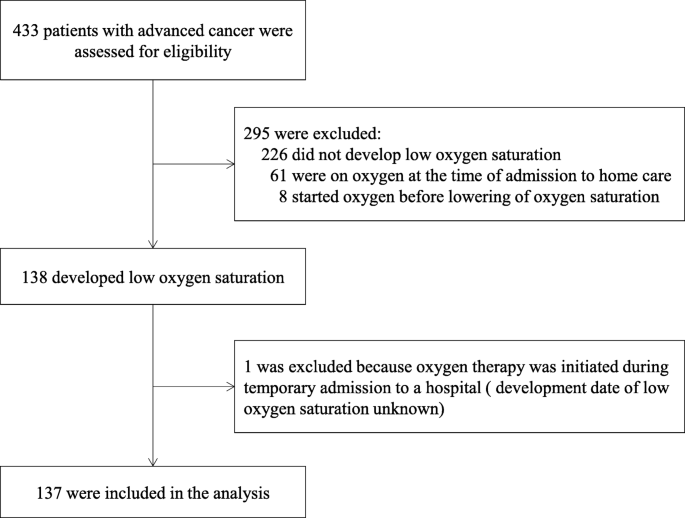NPR’s sites use cookies, similar tracking and storage technologies, and information about the device you use to access our sites (together, “cookies”) to enhance your viewing, listening and user experience, personalize content, personalize messages from NPR’s sponsors, provide social media features, and analyze NPR’s traffic. This information is shared with social media, sponsorship, analytics, and other vendors or service providers. See details.

You may click on “Your Choices” below to learn about and use cookie management tools to limit use of cookies when you visit NPR’s sites. You can adjust your cookie choices in those tools at any time. If you click “Agree and Continue” below, you acknowledge that your cookie choices in those tools will be respected and that you otherwise agree to the use of cookies on NPR’s sites.


- Jan 20, 2021 'A pulse oximeter is a small device that uses infrared light to measure how much oxygen is bound to the hemoglobin in your bloodstream,' Timothy Connolly, MD, a pulmonologist at Houston Methodist, tells LIVESTRONG.com. 'Traditionally, we put them on a patient's finger. It's a wonderful tool to get a sense of their oxygen status.'
- Most pulse oximeters are accurate to within 2% to 4% of the actual blood oxygen saturation level. This means that a pulse oximeter reading may be anywhere from 2% to 4% higher or lower than the actual oxygen level in arterial blood. A number of factors can impair the functioning or accuracy of a pulse oximeter.

If you’re wearing dark nail polish, your pulse oximeter may provide a false reading. An oxygen saturation level of about 95% is considered normal. Saturation levels below 92% are considered below average. Pulse oximeters are designed to be portable, so testing can be done wherever you are.
Lung Procedures, Tests & Treatments
If you have a symptom of shortness of breath or a known lung or heart condition, your doctor may recommend use of a pulse oximeter. The pulse oximeter, or Pulse Ox,is an electronic device that measures the saturation of oxygen carried in your red blood cells. Pulse oximeters can be attached to your fingers, forehead, nose, foot, ears or toes. The device may then be reused or disposed of. If using this in a home setting, you should ask your healthcare provider before disposing of a pulse ox device, as it can be expensive and is reusable.
In February 2021, the Food and Drug Administration issued an alert on limitations of pulse oximeters. If you have poor circulation, dark skin pigmentation, thick skin, currently use tobacco, your skin temperature is cool, or you are wearing dark fingernail polish, long, artificial nails or if your fingers are not clean, the pulse oximeter may give inaccurate or inconsistent readings. This is why the numbers from a pulse oximeter should not be used in isolation to determine your state of health. It is important to share readings that are abnormal or inconsistent with your healthcare provider.
What Is Oxygen Level
Read about COVID-19 and pulse oximetry in our Each Breath Blog: Pulse Oximetry – A Little Knowledge can be a Dangerous Thing.
What to Expect?
If working accurately, you can expect a simple, quick and safe measure of the oxygen saturation level in your body. The probe will be positioned and within a few seconds, the oximeter will provide a readout of your heart rate and your oxygen saturation level, as in the picture above. There are no needles and no pain involved in oximetry measurement. Some hospitals also use disposable tape probes that wrap around your finger, nose or toe.
The pulse oximeter uses a cold light source that shines a light through the fingertip, making the tip appear to be red. By analyzing the light from the light source that passes through the finger, the device is able to determine the percentage of oxygen in the red blood cell.
Understanding the Results
The pulse oximeter observes a rapid measurement of oxygen saturation level in your body without using needles or taking a blood sample. The measured amount shown on the screen reflects the saturation of your red blood cells with oxygen. This number gives your doctors and nurses an idea of what your treatment will be. The oxygen level may also help to determine if you need to receive supplemental oxygen. This saturation number (a good number would be over 90-92%) differs from a value called the pO2 (a good number would be over 60-65) which is measured by obtaining blood from an artery. Your doctor can clarify the significance of your value related to your particular situation.
What Are the Risks?
Oxygen Level Readings
There are no known risks or dangers of using a pulse oximeter when the values are reviewed and monitored by a competent health professional.
Pulse Oximeter Oxygen Level Chart
Page last updated: February 22, 2021
